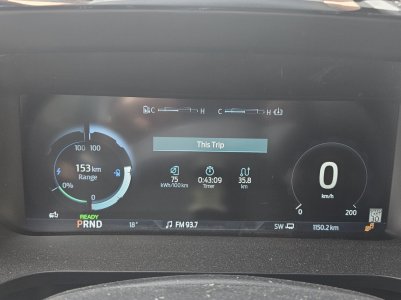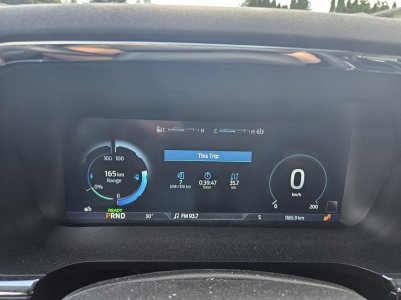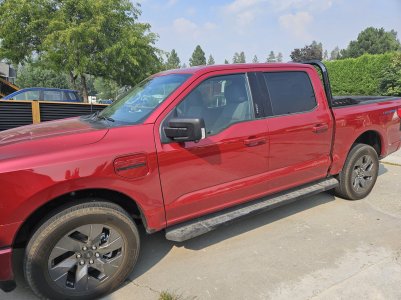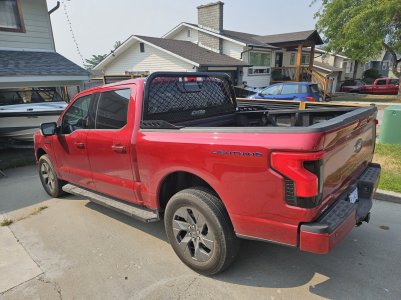sly_karma
Crew Member
Public chargers. We gotta use 'em sooner or later. I thought I'd try using one, close to home while I had no time or range pressure on me. 25 or so Chevron stations across Southern BC have fast chargers, and they're free - for now.
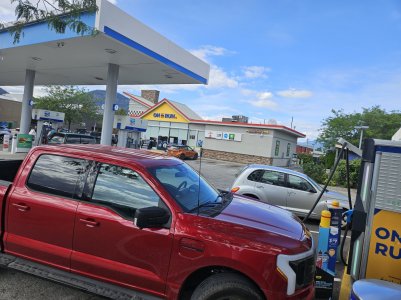
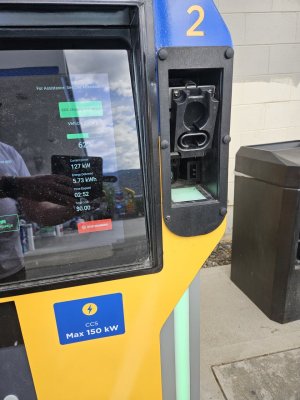
DC fast chargers, often referred to as DCFC, or Level 3 charging, is what you use when you're on a road trip and want to add some range quickly. Instead of the 7-8 kW my home AC charger delivers, DCFC offers charge speeds of 150 kW and higher - 20 times faster than what flows through my home charging. Today I bumped the battery from 50% to 80% in 15 minutes.
The vehicle has an additional pair of sockets to accept the bulkier DCFC connector. Cable is thicker and shorter, possibly even liquid cooled due to ultra fast energy transfer.
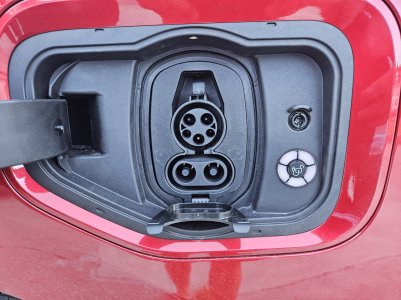
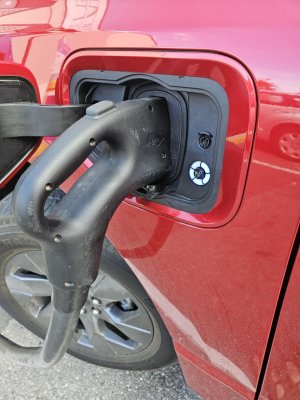
Initiating the charge and payment (if any) are accomplished via an app, of which I'll no doubt acquire many. This one connected fine, but I'll keep trying the various networks in my area to verify that they handshake correctly and recognize my payment details. Don't want to be dealing with that when I'm out on the big trip to the coast with boat in tow.
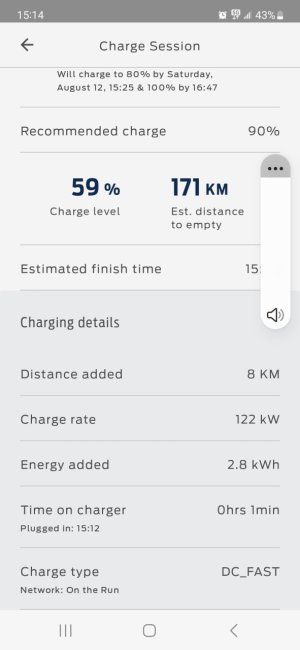
Note at the very top the two estimated completion times for charging to 80% and 100%. 11 minutes to go from 59% to 80%, but a further 1hr22 to go from 80 to 100. Charge speeds drop way off above 80% so most drivers end the session there and get back on the road. The fastest charging zone is between 20 and 80%.


DC fast chargers, often referred to as DCFC, or Level 3 charging, is what you use when you're on a road trip and want to add some range quickly. Instead of the 7-8 kW my home AC charger delivers, DCFC offers charge speeds of 150 kW and higher - 20 times faster than what flows through my home charging. Today I bumped the battery from 50% to 80% in 15 minutes.
The vehicle has an additional pair of sockets to accept the bulkier DCFC connector. Cable is thicker and shorter, possibly even liquid cooled due to ultra fast energy transfer.


Initiating the charge and payment (if any) are accomplished via an app, of which I'll no doubt acquire many. This one connected fine, but I'll keep trying the various networks in my area to verify that they handshake correctly and recognize my payment details. Don't want to be dealing with that when I'm out on the big trip to the coast with boat in tow.

Note at the very top the two estimated completion times for charging to 80% and 100%. 11 minutes to go from 59% to 80%, but a further 1hr22 to go from 80 to 100. Charge speeds drop way off above 80% so most drivers end the session there and get back on the road. The fastest charging zone is between 20 and 80%.


